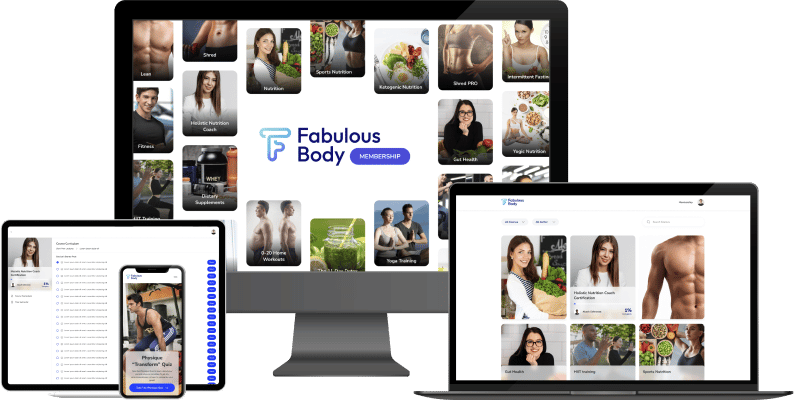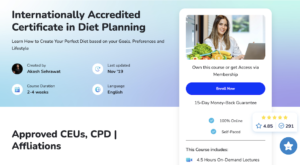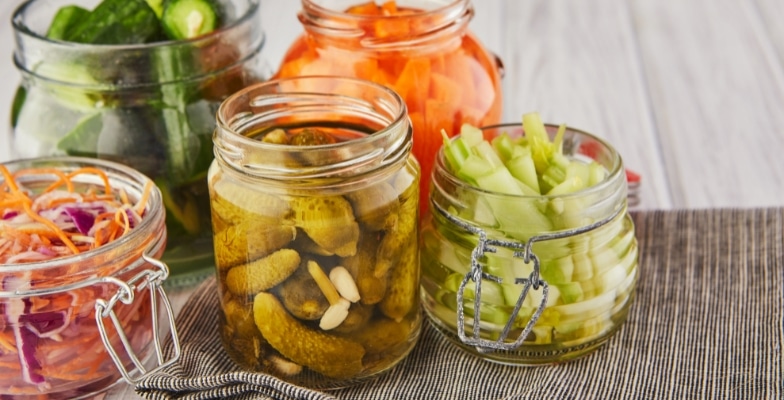What Is Mindful Eating? How To Practice Mindful Eating

Your aim should always be to progress, not to be perfect.
When I provide guidelines for mindful eating, I don’t mean you should worry about eating all your meals/snacks mindfully. If you try to do this, you may be overwhelmed and give up even before you start.
I average around five mindful meals a week (I eat only twice daily). For snacks, my main focus is my tea/coffee intake. I suggest you decide beforehand which meals/snacks you want to practice eating mindfully.
What Is Mindful Eating?
I like the definition of Mindful Eating given by headspace.com.
Mindful eating places awareness on the menu, whenever and wherever we eat.
As well as making us watchful about what we eat, it aims to transform our relationship with food by focusing on the how and why of eating, encouraging a more holistic point of view.
Ultimately, this means we have a better chance of understanding what foods nourish us and what foods help us stay healthy while also encouraging a deeper appreciation of every meal, every mouthful, and every ingredient.
The opposite of mindful eating is mindless eating. Needless to say, we all have PhDs in mindless eating.
Here Are a Few Examples Of What Can Happen When We Eat Mindlessly
-Eating very fast
-Refilling our mouth even before we are finished chewing what’s in it
-Not chewing the food properly
-Eating and multitasking, i.e., talking on the phone, watching Netflix, or talking to friends or family while eating
-Eating food that is tasty and emotionally comforting
-Eating at random times or out of impulse
-Eating when feeling lonely, sad, angry, depressed, anxious, or happy
-Overeating or putting more on our plates than we need
Mindful Eating Is A Skill, A Habit You Need To Build
Start small and build the habit over time. And just like with any other habit or skill that needs to be built, one needs to understand the benefits. Solid, tangible benefits, which I often term Return on Investment (ROI), motivate me to pursue something.
I know that the ROI of meditating, being mindful, working out, getting enough sleep, and other positive habits like these pay back a thousand times the effort I put in. So I work very hard to build essential habits, and mindful eating is one such habit, a skill I strongly feel is worth striving for. 🙂
Benefits Of Mindful Eating
You’ll Stop Eating Before You Are Full
Most of the time, if you eat mindfully, you will stop eating when you are about 70-80% full. You will realize that junk or fast food is not so tasty after all.
Being mindful brings forth this crucial fact: The first bite is the tastiest, after which the pleasure of eating a particular food reduces with every bite. I’ve noticed this pattern again and again.
For example, I was super worried about my coffee intake. For many years, I had been drinking 7–8 regular cups of strong coffee (not just black but also lattes). Even though my overall eating was super healthy, drinking this much caffeine daily was not something I was comfortable with, and I knew something needed to be done.
Once I started to get more mindful about my eating, I realized that when my coffee mug was around 30 percent, I had no more craving for the coffee in it, and usually, I sipped the rest out of habit but could do without it.
So that was unnecessary caffeine intake. I immediately replaced all my big coffee mugs with small cups. I put the big coffee mug where I could not access it easily. (I could not give it away as it was my landlord’s.)
This act immediately reduced my coffee consumption by 50 percent overnight, even though I was drinking the same number of cups. Then there were times I sipped the entire cup of coffee while either chatting with my family or doing some work on my laptop.
These were the times I asked myself, did I actually drink my coffee?
So I made it a rule to stop my work or anything else I was doing when I craved coffee and direct my focus to the whole process of not only drinking my coffee mindfully but also truly enjoying the whole act of brewing it! I made it a ritual.
I even started playing Beethoven’s Symphony Number 9 with it. Oh, what an enjoyable experience drinking coffee turned out to be! It took only fifteen minutes for the whole process, but by the time I had built this act into a habit, I had reduced my coffee intake from 7–8 cups per day to 5–6 cups per day.
I had another fascinating insight about my coffee drinking when I was meditating.
‘Akash, you don’t crave coffee all the time. It’s just that you work from home throughout the day, and since your work table is close to your kitchen, you feel the need to keep feeding yourself and get that hit to continue to work long hours. Why don’t you try a few alternative beverages?’
So I started to consciously include other types of beverages, including apple cider vinegar, green tea, Tulsi ginger tea, Matcha tea, Indian tea, Twinings English tea, etc., on a daily basis.
I realized with other beverages, even though there was some caffeine in them, which gave me the hit I was looking for, I drank far less, so the crash I experienced with coffee after about 45 minutes was not as severe with other beverages, and I felt good otherwise.
Having said that, the hit I get from coffee cannot be replaced entirely by any other beverage. And honestly, replacing that hit was never my goal. I never wanted to eliminate coffee 100%, but I limit it to one or two blissful small cups a day.
By experimenting with the techniques discussed above, I reduced my coffee consumption by around 70%, and it has been like that ever since. All this happened because of the insight I got through mindful eating.
Let’s apply the same concepts when it comes to eating main meals. I want to present you with a step-by-step system that, when applied, can help you drastically reduce your calorie intake, especially from unhealthy food.
You will be able to lose weight effectively, improve your health, and, most importantly, enjoy and cherish your meals, improving your relationship with food overall.
How To Practice Mindful Eating: 5-Step Process
1) Be Mindful Of The Total Number Of Calories You Need
If you are serious about losing weight and/or building lean muscles, you NEED to count calories. This is the best way to get fabulous results.
I have made the process very simple for you. Just go to my TDEE Calculator, and you’ll be able to calculate the total calories you should eat every day based on your height, body weight, activity levels, and goals.
Related: TDEE Calculator
Once you are mindful of the calories you should eat daily, you can limit your portion sizes. This strategy of portion control always works! To this day, I frequently weigh my food.
2) Include Junk And Other Emotionally Comforting Food In Your Diet Plan
Needless to say, most of us cannot win the war against sugar. It’s a powerful enemy, and a study even hinted that its addictive power is more potent than cocaine. An old-age saying applies here,
If you cannot beat them, join them.
In my Certificate In Diet Planning course, I discuss three approaches to eating.
Enjoyable, Realistic, and Aggressive.
Each approach allows a certain percentage of calories from junk and fast food. Be realistic about trying to eat a perfect diet; you won’t be able to eat boiled chicken and broccoli all the time!
These first two steps are the macro framework, and being mindful of these suggestions will help you tremendously towards achieving your health and fitness goals.
3) Schedule Meals For Which You Want To Practice Mindful Eating
Decide beforehand which meals/snacks you want to eat mindfully. Feed your subconscious mind this goal over and over again so that when the time to eat that specific meal (e.g., breakfast) comes, you automatically stop everything and get 100 percent involved in the process of mindful eating.
If you think you are not ready to be mindful of a meal, start small. Start with a cup of coffee as I did, or perhaps a snack.
4) Be Mindful Of The Whole Process, Not Just Eating Your Meals
If you cook your food, it will be easy to be mindful of more than just eating. If you don’t cook, then be present in the kitchen while your meal is prepared.
Hey, if you cannot do this step, that’s fine too! Now, start by focusing on your breathing for a few minutes and get focused on the present moment. Still your mind, and avoid reacting to any distracting thoughts. Also, try to divert all calls to voicemail or leave your phone in another room.
After a few minutes, shift your attention to your body. Start to focus on your senses. What do you experience when you see or touch each raw ingredient?
Let’s say you are going to eat eggs for breakfast. Look at all the ingredients and stop for a moment to ask yourself this question:
How did this food arrive in my kitchen?
For example, imagine a farm where the hens lay eggs.
-Think of the farmer collecting these eggs and delivering them to the supermarket.
-Send love to the hens that laid these eggs for you.
-Send love to the supermarket chain/grocery store you bought your eggs from.
-Mentally thank the hens and the farmer.
-This practice may seem odd at first, but just go through the process.
-Over time, you will start to feel wholesome emotions like gratefulness, unconditional love, and compassion.
-All this can be a humbling experience.
Naturally, there will be more ingredients like dairy products or bread. You can start by visualizing the supply chain for just one ingredient, then once you get good at it, include other food items.
The whole idea is to be grateful that you have access to these ingredients in times when there is a starvation epidemic in parts of the world. Billions of people are food insecure. They don’t know where their next meal is going to come from. 🙁 The visualization process I described takes no more than five minutes.
-Next, if possible, feel the food in your hand.
-If you cook your food, this process is easy.
-While washing vegetables, look at and connect with them more deeply. Notice changes in bodily sensations as you do this.
-Vegetables are the most nutritious food on the planet, and you can visualize how eating them will nourish your body and make you super healthy.
-Again you can connect more deeply with the soil, water, and the farmer who grew the vegetables for you.
-Once you start to cook the food, soak in the aroma of the coconut oil or ghee that you use for cooking.
-You can even start to briefly munch on a few raw vegetables like carrots or cucumbers while making your food.
Eating salads before a meal is good because it curbs your appetite as the fiber in them draws water into your stomach and takes up space. Sense the digestive juices in your stomach, which is 100 percent ready to digest the food you are about to give it.
If you do this correctly, you will realize there is increased saliva in your mouth. You see, digestion starts in the mouth itself. You can also play soothing music if you like. If you are planning on cooking dinner, some candles or incense can set the mood and allow for an even richer experience.
This practice is also fantastic for the entire family; everyone can pitch in. So now it’s time to eat the delicious meal you have cooked for yourself!
5) Start By Eating Mindfully
Portion control is very important when you are trying to lose weight. A medium-sized plate is good for this purpose, and the first serving should always be limited.
No one will stop you from taking a second serving, so be mindful and fill your plate with a reasonable amount of food the first time. Fill most of your plate with salads or cooked vegetables, followed by a protein source like dal or chicken.
The lowest priority should be given to carbohydrates, which may include roti, tortillas, rice, bread, etc. Ask your family members to keep their phones aside. No TV or Netflix either.
Just focus on the aroma of the food, incense, nice music, and, if it’s dinner, maybe a small glass of red wine. The presentation of the food can also help tremendously.
Try to add garnish and make meals look beautiful; research has shown it increases digestive juices, leading to better digestion. Now, it’s time to take the first bite. Slowly start chewing and keep the fork down while you chew.
Once you are mindful, you will immediately notice the urge to quickly swallow the food in your mouth and take the next bite. If you give in to that urge, the meal is over before you know it. So this time, once you take a bite, put the fork down and cherish the flavors, the taste.
Chew your food nicely and only pick up your fork and take the next bite after you finish the food in your mouth. You may be the last one to get up from the table if you follow this approach, but don’t worry; it will become a habit.
You will realize a sea-change difference in how you feel after eating a meal mindfully, not to mention the complete satisfaction. Research has shown that it takes 15–20 minutes for the gut to signal the brain to stop eating because you are full. But many of us finish our meal in 10 minutes or less.
And then we realize we hardly noticed eating anything and fill up our plates with more food. This ultimately leads to overeating, which by the way, is one of the leading causes of obesity.
6) Answer These 5 Important Questions About Eating
Let me make this point super-interesting for you, and let’s start with a few questions I designed for you.
Q 1) How do you rate the following meals on a scale of 1-5, where 1= not tasty and 5= super tasty?
Unhealthy Meals
-Pizza
-Burger with cola and fries
-Ice cream
Healthy Meals
-Grilled chicken breast with veggies and mashed potatoes
-Lentils (dal), cooked vegetables and brown rice
-Eggs
-Oatmeal
If 40-50% of the calories you consume are coming from junk food, you will probably rank junk food high (4 or 5).
Now answer the following question once you are more mindful of your eating! It will only make sense to you (although you can answer them now if you like).
Q 2) On what scale would you agree that the taste of your favorite food is fantastic for the first few bites and starts to diminish after eating about 25 percent of it?
1= The last bite is as tasty as the first bite, disagree
5= Agree
The following questions will be applicable after one hour of eating a given meal.
Q 3) How do you feel ~30 minutes after eating your favorite unhealthy junk/fast food, like pizza or burgers?
1= Sluggish, sleepy, with little or no energy
5= Awesome! My body can digest anything. 🙂
Q 4) How do you feel after eating a healthy meal like oatmeal, an omelet or Indian thali?
1= Sluggish, sleep with no energy
5= I feel good, full of energy
Note: Overeating even a healthy meal can make you feel sleepy, as most of your blood is directed towards your stomach to take care of the extra food you have eaten.
But let’s just assume you ate up to 100 percent of your capacity, although you will agree that when it comes to junk/fast food, we tend to eat more than our capacity (plus there are a lot of hidden calories in processed foods that we are not aware of).
And the last question,
Q 5) Which of the following is more important to you?
Junk food is more important. I am okay if I feel sluggish or moody with little or no energy after meals. I just cannot give away my junk food. Feeling good is more important. I want to be full of energy throughout the day.
Most of you will be somewhere in between, but when you think about these questions mindfully, especially after being mindful for many weeks, you may realize a few things like I did.
-Junk/fast foods are, after all, not that tasty. However, just the first few bites are addictive, and that is what we crave.
-This insight will allow you to reduce the quantity of junk/fast food you eat significantly.
-If you start to maintain a food diary, you will realize how most times, eating junk/fast foods does not make you feel good. Instead, they require a lot of energy to digest and absorb.
-Over time, when you reduce the quantity of junk food you eat (I am not saying eliminate it) and increase the quantity of healthy foods, your taste buds will change biologically.
-You will also be less likely to eat unhealthy food, and your addiction to it will decrease drastically.
-Lastly, as you start to consistently eat at least 90 percent of your calories from unprocessed, nutritious foods, you will not only look your best but also have a lot of energy throughout the day!
Looking good and feeling great most of the time is also an addictive feeling, something healthy people don’t like to give up. 🙂 I don’t crave pizzas, burgers, or ice cream anymore. I am not lying. Pinky swear!
Sure, if I am hungry and my friends and family order French fries, etc., I take a bite or two, but I don’t have the urge to keep eating.
As your natural taste buds emerge and the addiction to junk/fast foods goes down, healthy food will start to taste really good.
Apples taste like sugar to me because my overall sugar intake is much, much less. And by being a bit creative, you can make healthy food even tastier.

Skill-Based Education.
Global Recognition.
Powerful Community Building
Secure a certificate of completion in as little as a day by graduating from one of our free courses.
Get Access to Our Free Courses. No Credit Card Required.

Fabulous Body Membership
Your All-Access Pass to A Fabulous Body & A Rewarding Career
25+ Certificate Courses & Programs, All Included
15 Day Free Trial, 100% Money-Back Guarantee
About Akash Sehrawat
Akash is a creator of 25+ programs and certificate courses in which more than 200,000 students have enrolled both on Udemy and Fabulous Body's native platform. Akash is also an author of three books that can be found on Amazon. His answers on Quora have gathered more than 12 million views in less than a year.












